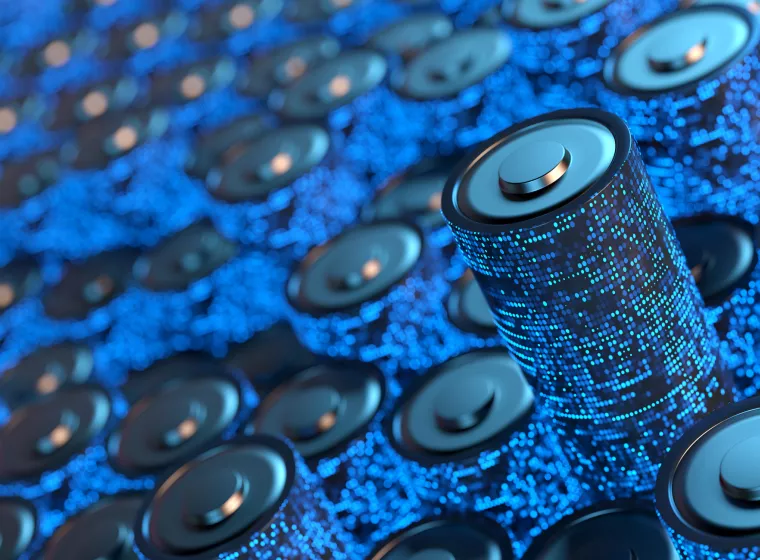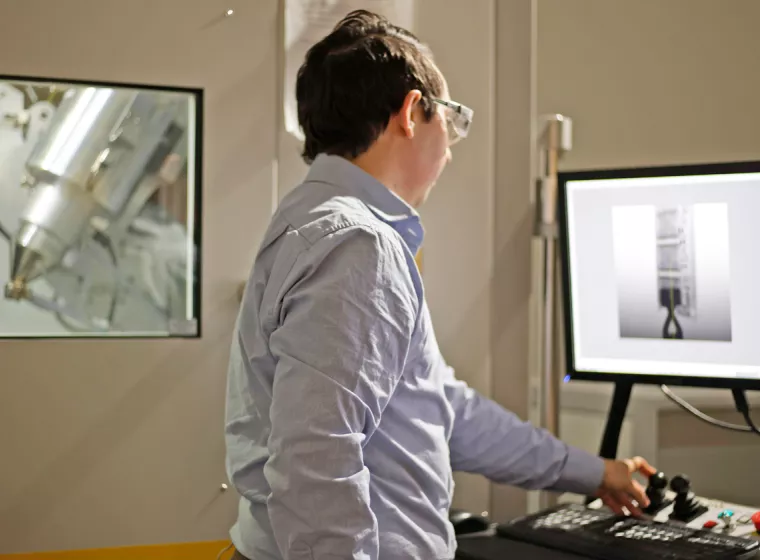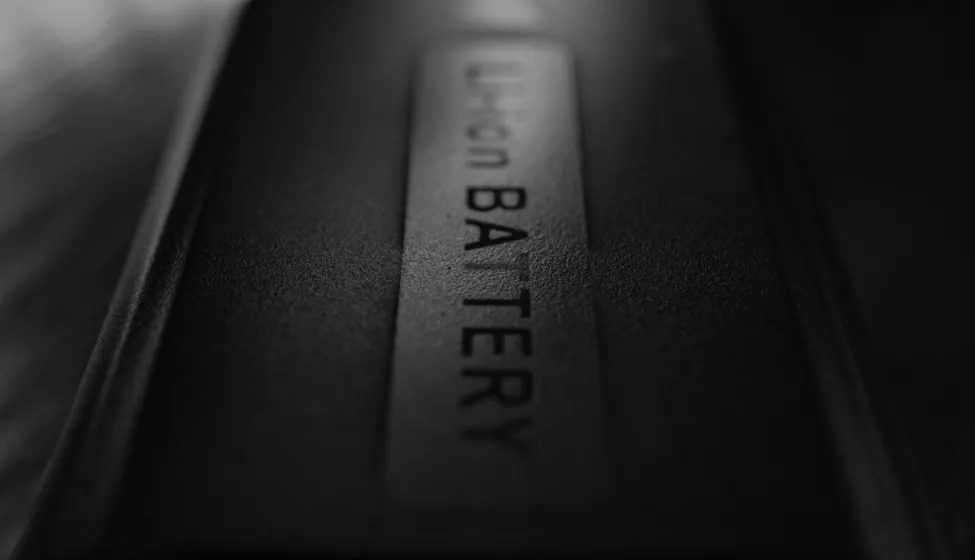September 1, 2022
Technical considerations for enforcing intellectual property claims over battery technologies
Since Exponent's 2021 article on the increasingly competitive intellectual property landscape for solid-state batteries, demand for new energy storage technologies has shown no sign of slowing down.
Although supply chain and natural resource limitations pose challenges, battery-enabled products and sustainability commitments by government and industry — such as the Biden administration's $7.5 billion investment in electric vehicle charging stations and the EU's commitment to 30 million electric vehicles by 2030 — continue to drive demand, market competition, and more patents.
Commitments
More patents naturally lead to more disputes, but the crowded field and global nature of the battery supply chain will make enforceability challenging. As patents proliferate, the margins of variation narrow between technologies, their attributes, and what each patent owner can lay claim to; as those margins narrow, distinguishing between innovation and infringement requires ever more sophisticated technical expertise. These enforcement challenges will only grow as burgeoning technologies such as solid-state batteries advance, and market consolidation deepens.
For OEMs and battery manufacturers who rely on monopolizing their technological innovation to drive pricing or performance advantages, the stakes are high. Because a party can theoretically infringe on a patent freely until the rightful owner makes a claim, the burden of proof lies with patent holders who suspect infringement.
Considering certain key technical elements of battery technologies before pursuing a claim — or even before filing a patent — can help prepare patent holders and their legal teams to assert ownership of an intellectual property asset efficiently and effectively when it matters most.
Getting the data when you need it
One often overlooked factor in deciding to assert ownership of an intellectual property asset is the ability to obtain pertinent technical data to prove infringement. Detailed and unambiguous technical proof is often essential to achieving a desirable legal outcome. Technical facts that are incomplete or open to multiple interpretations create opportunities for scrutiny that risk undermining the allegations.
Ownership is usually asserted at the point when the infringed technology is included or about to be included in a fully assembled battery or device, because it's typically not possible to access the raw materials that make up a competitor's battery at the early stages of litigation. As such, legal teams will have to rely on obtaining pertinent technical data from commercial products, often after significant field exposure. Before litigation, evaluating these technical and logistical challenges and considering proof-of-concept testing provides an opportunity to get ahead of the many obstacles in proving a claim.
The type of analysis involved can sometimes require highly specialized testing and understanding of battery technologies. In the high-profile case of BASF v. Umicore in 2016, for example, where BASF claimed that Umicore's importation of materials to the U.S. infringed on its patent covering nickel-manganese-cobalt cathode materials, BASF relied on X-ray scattering from a synchrotron source. This powerful particle collider the size of a football field proved essential to BASF presenting their case. The understanding of uncommon and specialized tools and their associated costs can also be a factor in determining whether it's possible to pursue a claim.
Uniqueness of battery patents
Maintaining market relevance and keeping up with the pace of technological progress in this competitive space can require innovation at all levels of battery design and manufacturing. This includes raw material inputs, battery assembly, battery architectural designs, system and device integration, and more — all of which come with intellectual property considerations.
Frequently, patent filings for lithium-ion batteries cover a novel component material (e.g., an electrolyte formulation) or novel combination of component materials (e.g., solid-state battery architecture). The claims in these types of patents typically list specific formulation requirements, including details about the individual components in their initial form (raw materials) or upon assembly of the battery (e.g., concentration of electrolyte salt).
But unlike most technologies, the initial components of a lithium-ion battery cell can change in complex, irreversible ways during electrode manufacturing and battery cell assembly, and even more so once used in a product. Consequently, it is often impossible to apply common techniques to determine the composition, morphology, or disposition of the initial materials in a lithium-ion battery cell. If key elements of the claims are no longer present in their original form, or if there are no concrete methods to extract evidence from other clues, this may introduce uncertainty or challenges to meeting standards for evidence in litigation.
Thinking ahead
When filing a patent, it can be helpful to identify the ways to obtain proof of infringement from a fully assembled battery. This may include documenting methods to separate components of interest, analytical techniques compatible with limited quantities of materials, and strategies to address irreversible processes. For instance, a claim describing electrode porosity or tortuosity may need to account for changes to the structure of the electrode that can occur during the manufacturing process (e.g., during formation) as well as during aging and use.
Patents often include supporting test data providing evidence for their claims. In the case of input materials to the battery, the described methods may be irrelevant to the type of testing required to characterize these properties in a fully assembled battery. Similarly, the same testing issues should be considered when writing the specific patent claims.
Another challenging example can be enforcing patents that include an electrolyte formulation, as the electrolyte composition changes during the manufacturing process and with use. For example, an electrolyte formulation might include electrolyte additives that help create a stable solid electrolyte interface (SEI) layer during the "formation process," one of the final steps of the manufacturing process. During the formation process, some electrolyte additives are consumed (i.e., irreversibly react with the negative electrode) in the creation of the SEI layer.
How Exponent Can Help
For over 50 years, Exponent has been among the foremost global leaders in assisting businesses, attorneys, investors, and inventors with issues pertaining to intellectual property. Exponent's diverse team of battery experts comprises consultants in multiple scientific and engineering disciplines with significant experience in various aspects of intellectual property, including infringement, validity, claim interpretation, prior art, trade dress, trade secrets, due diligence, and technical valuation. This experience, combined with deep knowledge of how batteries function and age, the interplay between components, custom analytical techniques, interpreting the reliability of results, and testing capabilities that range from medium volume to research-level across the entire product life cycle, makes Exponent's breadth and depth of battery expertise unparalleled.
What Can We Help You Solve?

Battery Intellectual Property & Trade Secrets
Exponent advises clients on issues of intellectual property and trade secrets.

Disputes
Get an independent, expert opinion for understanding challenges based on science, evidence, and data.

Custom Battery Testing
Custom product safety, performance, and industry certification battery testing services.




